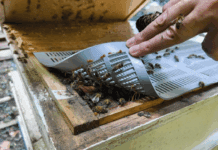A 3d-printed biosensor has been demonstrated that enables real-time, continuous monitoring of a range of pollutants in water.
Researchers from the University of Bath’s Department of Chemical Engineering and Bristol Robotics Laboratory have produced the device, which employs electrochemistry. The sensor appears to be little more than a fuel cell filled with bacteria. The bacteria live, feed and reproduce inside the fuel cell. When they eat and grow, they produce a small, measurable electrical charge. When bacteria in the sensor come into contact with contaminated water, the electrical current decreases by a measurable amount, indicating the presence of contamination.
In laboratory trials, the research team was able to use the sensor to detect pollutants such as cadmium. Dr Mirella Di Lorenzo, a lecturer in Chemical Engineering at Bath, described the sensor as a simple, but useful warning system. “Because this system uses live bacteria, it acts a bit like a canary in a mine, showing how these chemicals affect living organisms.”
Dr Di Lorenzo also stated that an added benefit of the device is that results are immediate. “This means we are able to monitor the level of pollutants in the water in real time without having to collect multiple samples and take them to a laboratory.”
It may be a candidate for a future pollution measurement method, producing precise results and being far less expensive or complex than mass spectrometry. The inexpensive nature of the device – being a simple, 3d-printed assembly – also suggests it might be useful in developing countries.
The research was published in the journal Biosensors and Bioelectric in August (title: ‘A small-scale air-cathode microbial fuel cell for on-line monitoring of water quality’).






